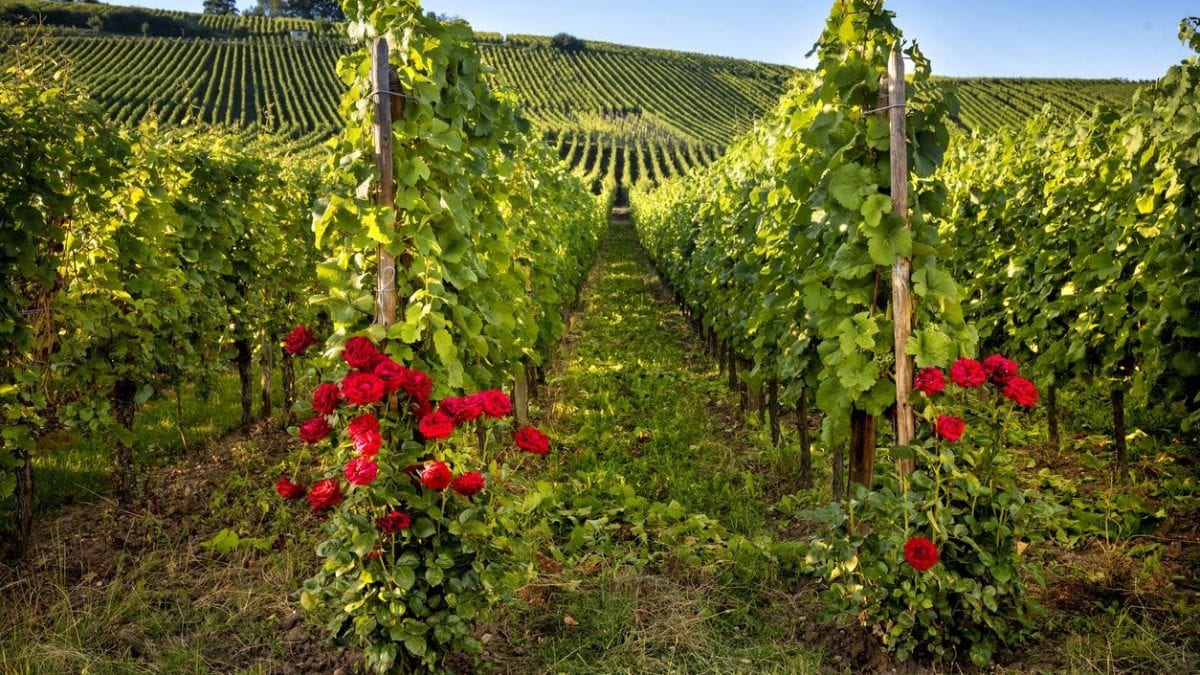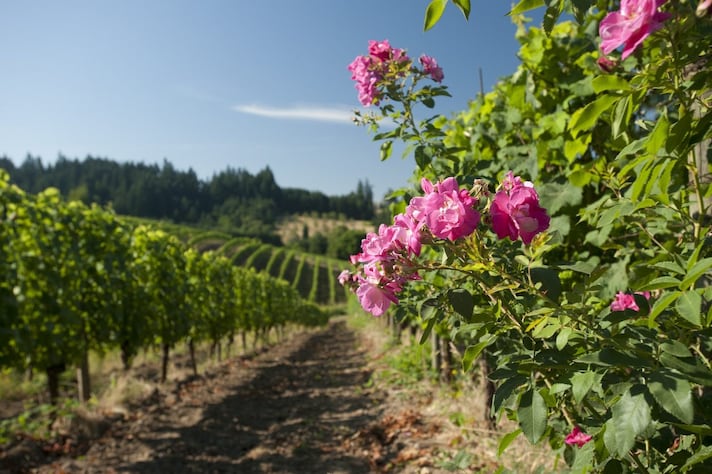
Tourism has changed a lot in recent years and a big trend is visiting vineyards. Almost everyone is surprised by an element present in most vineyards and that seems detached from the surrounding landscape: large bushes of lush roses at the entrance to the vineyards. Why are roses planted in vineyards? The explanation is not at all romantic, even if these iconic flowers immediately make us think of our better half. Roses are perfect sentinels for the vine, that's why they are there.
Roses Are the "Spy Plants" Of Wine
Just as a good chess player knows when to sacrifice his pawns, a good winemaker knows which plants to "sacrifice" to save the vine. The roses planted at the head of the rows are not a simple aesthetic whim nor a tradition that is passed down from generation to generation (at least not entirely). Roses are the sentinels of the vineyard. It must be said that once, especially in France, roses also had another function: they signaled the horses when to turn without overwhelming the crops. Today the reason is purely technical.

The rose is the best spy plant around to save the vines and the harvest. In fact, it acts as a sentinel because it is exposed to the same diseases, mineral deficiencies and parasites as the vine but has a much lower resistance to these agents. On the other hand, it is well known that roses are delicate. Rosaceae therefore have the function of a "thermometer" to see if the vine has a "fever". If the plant gets sick, farmers have time to intervene in the vineyard and prevent the problem from spreading to all the other plants, which would be fatal for the harvest.
It must be said, however, that today many large companies actually plant them for tradition and because roses are beautiful. They add color and make the entire landscape "more instagrammable", which in the era of wine tourism seems essential for customers. Obviously, there are very precise technologies that make the "sentinel" no longer necessary. Despite technical developments, rose growing is still a very widespread practice, especially among the more traditionalist winemakers and smaller wineries that cannot afford large investments.
;Resize,width=767;)
